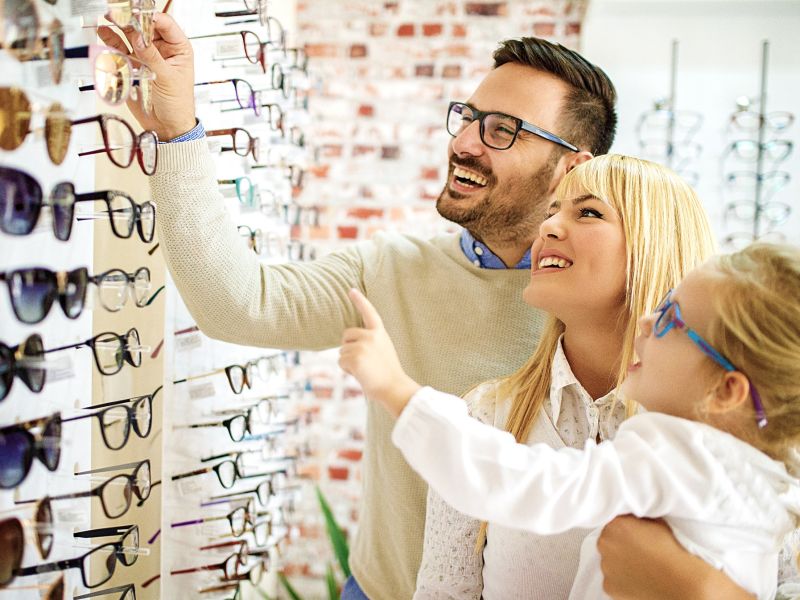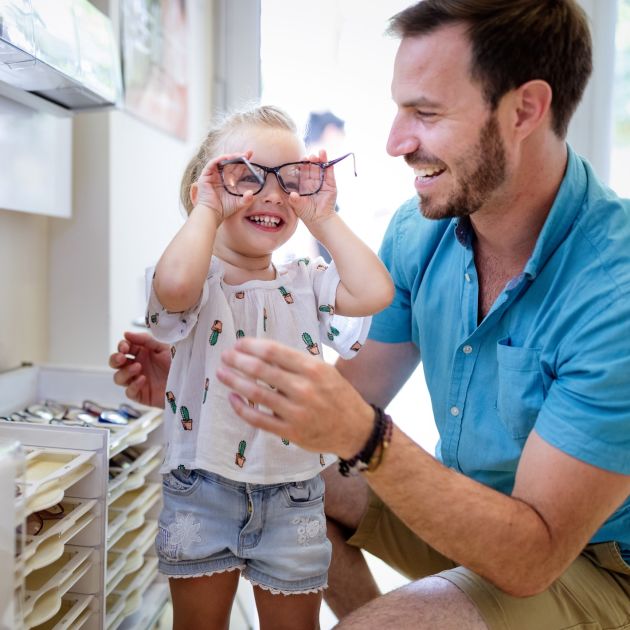Why you should book your family in for an eye exam this half term
Apr 19, 2021 in Children's Eye Care

Family eye care is more important than ever. Now is the time to book your children in for a free eye test.
Getting the kids back to school, working towards the “new normal” may feel a bit hectic so booking your family’s eye exam may not be at the forefront of your mind at the moment.
You may have noticed the increased time we’re all spending in front of screens lately (box set binges, phone games and video chats) and that’s not great for our eyes. We’re asking a lot of our bodies: many of us haven’t spent much time looking at distance objects recently so getting our eyes to focus on the whiteboard at the front of the classroom or a tennis ball in PE, may result in eye strain, headaches and even a change in your prescription.
You’ll no doubt be scheduling in play dates, visiting attractions again and catching up with friends where possible, but there’s something else you ought to think about this term – booking an eye examination for you and your family.
When does my child need their first eye test?
We usually recommend children go for their first eye test around the age of 3, followed by a repeat eye exam just before they start school. We know time flies and the chaos of family life means that eye examinations and dentist appointments can slip under the carpet, but it’s never too late to book that initial review.
If no vision impairment is detected, we recommend repeating the test every two years. However, an annual sight test may be preferable if the optometrist has any concerns.
There are signs to look out for in the meantime – or indeed before your child reaches 3 years old – that could indicate the need for an eye test. Some symptoms include:
Frequent eye rubbing or blinking Red or crusty formations around the eyes Failure to make eye contact Extreme sensitivity to light Unusual white reflection in the pupil Squinting
Remember to inform your optometrist if you’ve noticed any of these symptoms or there’s a family history of eye conditions.
How do I know if my child’s vision is developing correctly?

If your child is under 16, or a teenager under 19 who’s in full-time education, they are entitled to free eye examinations on the NHS. So, if you’re ever worried about how their vision is developing or if they’re meeting the right milestones for their age, it’s worth booking in an appointment with your optician.
After all, it’s always better to err on the side of caution when it comes to our eyes.
We highly recommend upgrading your eye examination to an Ultimate Eye Examination for a small additional fee, to give your child the best possible eye care and advice. Our optometrists will be able to identify anything unusual for further investigation or monitoring, if required. We are also on hand to advise on other health issues such as myopia (short-sightedness), conjunctivitis (pink eye) and more.
Children’s vision develops in the first six months, and at the half year milestone you should see an improvement in their hand-eye coordination. ‘A parent’s instinct is always right’ as they say, so if you feel anything is amiss when it comes to your baby’s sight, a visit to an optometrist could put your mind at ease.
Which eyesight conditions can be found in children?
There are some eye conditions which are common in school-age children and some that require immediate attention. They include:
- Hypermetropia (long-sightedness) - being able to see distant objects clearly, but struggling to see things nearby.
- Myopia (short-sightedness) - being able to see well close up, but objects in the distance appear blurred.
- Amblyopia (lazy eye) - around 1 in 50 children develop a lazy eye. It can be difficult to treat after the age of 6.
- Colour Vision Deficiency - usually inherited and most commonly known as colour blindness. It inhibits the ability to distinguish between colours.
- Retinoblastoma (a rare type of eye cancer) – if it’s picked up early then it can usually be cured (90% of patients are successfully treated). Symptoms for retinoblastoma include a white reflection in the pupil in photos and a colour change in the iris. If you notice these signs, it requires immediate examination. For more information on the condition, see the NHS for Retinoblastoma.
- Conjunctivitis – also known as red or pink eye. It makes your eyes bloodshot with a burning or gritty sensation and can usually produces pus that sticks to lashes. Young babies should get an immediate appointment if you notice the signs of conjunctivitis. You can find more information with the NHS.
For more information on common eye conditions in children, see the Leightons Blog.
Book today
If you’re worried about your child’s eye health or they’re due an initial eye examination, call us to book an eye test on 0800 40 20 20 or book online. We are open by appointment only with the safety of you and our practice teams as our top priority.

